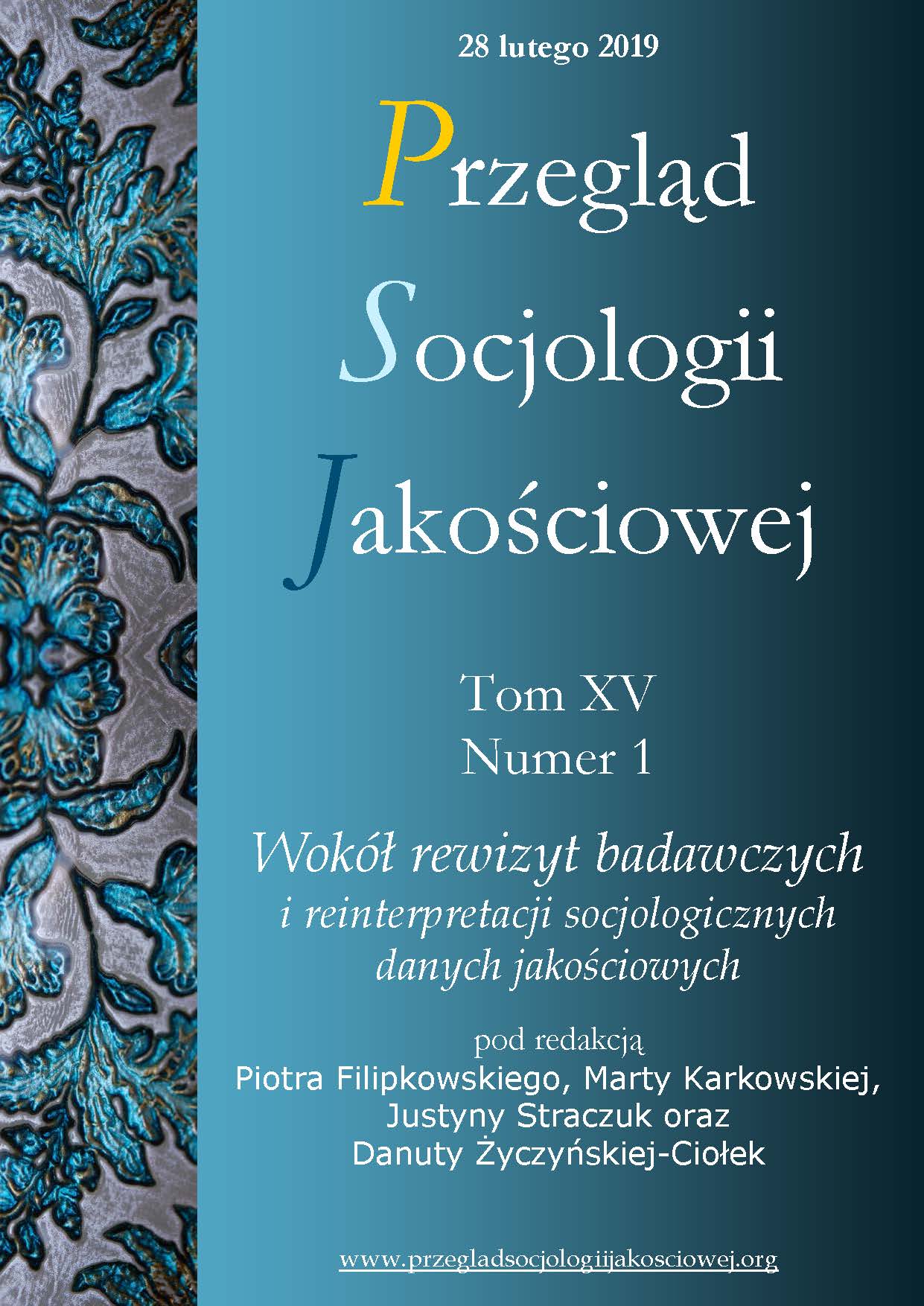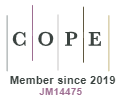On the Treadmill of Everyday Life: Work-Family Boundary Dynamics Among Working Full-time and Self-employed People
DOI:
https://doi.org/10.18778/1733-8069.15.1.08Keywords:
everyday life, border areas, work, leisure, border management, border contestation, work-life balance, boundary theoryAbstract
The article aims to examine the subject of boundary work and management, taking into account the employment mode and family status of the researched persons. The proposed perspective is critical towards prevailing work-life-balance concepts and emphasizes the dynamic and interminable process of mutual influences in which the boundaries between work, everyday life, and family are produced, maintained, negotiated and crossed on a daily basis by individuals. Drawing on qualitative research, we want to see how respondents understand and define the term border areas and what the forms of the day-to-day boundary management process are, depending on the mode of work. In our text we discuss implemented border management strategies: the strategy of rational regulation of the border as well as various strategies of contesting and blurring the border among the researched persons.
Downloads
References
Allen Tammy D., Cho Eunae, Meier Laurenz L. (2014) Work-Family Boundary Dynamics. „Annual Review of Organizational Psychology and Organizational Behaviour”, vol 1, s. 99−121 [dostęp 2.08.2018]. Dostępny w Internecie: orgpsych.annualreviews.org.
Google Scholar
Angrosino Michael (2010) Badania etnograficzne i obserwacyjne. Przełożyła Maja Brzozowska-Brywczyńska, Warszawa: Państwowe Wydawnictwo Naukowe.
Google Scholar
Ashforth Blake E., Kreiner Glen E., Fugate Mel (2000) All in a day’s work: Boundaries and micro role transitions. „The Academy of Management Review”, vol. 3, s. 472−491.
Google Scholar
Ashforth Blake E. (2001) Role transitions in organizational life: An identity-based perspective. London: Lawrence Erlbaum Associates.
Google Scholar
Carreri Anna (2015) Italian Parents in Precarious Work: How Normative Beliefs Affect Social Understandings of the Work Family Boundary [w]: Samantha K. Ammons, Erin L. Kelly, eds., Work and Family in New Economy, s. 1–34. United Kingdom, North America, Japan, India, Malaysia, China: Emerald Group Publishing Limited.
Google Scholar
Clark Campbell Sue (2000) Work/family border theory: A new theory of work/family balance. „Human Relations”, vol. 6, s. 747−770.
Google Scholar
Desrochers Stephan, Sargeant Leisa D. (2004) Boundary/Border Theory and Work-Family Integration. „Organization Management Journal Bibliography”, vol. 1, s. 40−48.
Google Scholar
Flyvbjerg Bent (2006) Five Misunderstandings About Case-study research. „Qualitative Inquiry”, vol. 12, s. 219−245 [dostęp 10.07.2018]. Dostępny w Internecie: https://arxiv.org/ftp/arxiv/papers/1304/1304.1186.pdf
Google Scholar
Forsber Lucas (2009) Managing Time and Childcare in Dual-Earner Families. „Acta Sociologica”, vol. 52, s. 162–175.
Google Scholar
Frone Michael R., Yardley John K., Markel Karen S. (1997) Developing and Testingan Integrative Model of the Work–Family Interface. „Journal of Vocational Behavior”, vol. 50, s. 145–167.
Google Scholar
Gądecki Jacek, Jewdokimow Marcin, Żadkowska Magdalena (2017) Tu się pracuje! Socjologiczne studium pracy zawodowej prowadzonej na zasadach telepracy. Kraków: Libron.
Google Scholar
Gotowska Małgorzata (2014) Work Life Balance w modelu równowagi życia (bytu) [w]: Renata Tomaszewska-Lipiec, red., Relacje praca-życie pozazawodowe. Droga do zrównoważonego rozwoju. Bydgoszcz: Wydawnictwo Uniwersytetu im. Kazimierza Wielkiego, s. 61−71 .
Google Scholar
Gubrium Jaber F., ed. (2012) The Sage handbook of interview research: the complexity of the craft. 2nd ed. Los Angeles, London: Sage Publications.
Google Scholar
Global Workplace Health and Wellness Report (2013) [dostęp 2.09.2018]. Dostępny w Internecie: https://gccmarketing.blob.core.windows.net/sitecontent/2013_Global_Workplace_Health_and_Wellness_Report.pdf
Google Scholar
Greenhaus Jeffrey H., Nicholas J. Beutell (1985) Sources of Conflictbetween Work and Family Roles. „The Academy of Management Review”, vol. 10, s. 76–88.
Google Scholar
Grzywacz Joseph G., Adam B. Butler (2005) The Impact of Job Characteristics on Work-to-Family Facilitation: Testing a Theory and Distinguishing a Construct. „Journal of Occupational Health Psychology”, vol. 10, s. 97–109.
Google Scholar
Hektner Joel M., Schmidt Jennifer A., Csikszentmihalyi Mihaly (2007) Experiencing Sampling Method. Measuring the quality of everyday life. Thousand Oaks, London, New Delhi: Sage Publications.
Google Scholar
Kahneman Daniel (2007) Pułapki myślenia. O myśleniu szybkim i wolnym. Przełożył Piotr Szymczak, Poznań: Media Rodzina.
Google Scholar
Kanter Rosabeth Moss (1977) Work and family in the United States: A critical review and agenda for research and policy. New York: Russell Sage Foundation.
Google Scholar
Kaufman-Scarborough Carol (2006) Time Use and the Impact of Technology: Examining Workspaces inthe Home. „Time & Society”, vol. 15(1), s. 57–80.
Google Scholar
Kreiner Glen (2002) Boundary preferences and work-family conflict: A person-environment fit perspective. Paper presented at the annual meeting of the Academy of Management Conference, Denver, CO.
Google Scholar
Kostera Monika, Krzyworzeka Paweł (2012) Etnografia [w:] Dariusz Jemielniak, red., Badania jakościowe. Metody i narzędzia. Warszawa: Wydawnictwo Naukowe PWN, s. 167−185.
Google Scholar
Kvale Steiner (2012) Prowadzenie wywiadów. Przełożyła Agata Dziuban. Warszawa: Wydawnictwo Naukowe PWN.
Google Scholar
Lewis Suzan, Cooper Cary L. (1999) The work–family research agenda in changing contexts. „Journal of Occupational Health Psychology”, vol. 4, s. 382−393.
Google Scholar
Madden Mary, Jones Sydney (2008) Networked Workers. Washington, DC: PewRes. Cent [dostęp 24.07.2018]. Dostępny w Internecie: https://www.pewinternet.org/wp-content/uploads/sites/9/media/Files/Reports/2008/PIP_Networked_Workers_FINAL.pdf.pdf
Google Scholar
Nippert-Eng Christena (1996a) Home and Work: Negotiating Boundaries Through Everyday Life. Chicago: University Chicago Press.
Google Scholar
Nippert-Eng Christena (1996b) Calendars and keys: The classification of “home” and “work.” „Sociological Forum”, vol. 11, s. 563–582.
Google Scholar
Pleck Joseph H. (1977) The work-family role system. „Social Problems”, vol. 24, s. 417−427.
Google Scholar
Seidman Irving (2015) Interviewing As Qualitative Research a Guide for Researchers in Education and the Social Sciences. New York: Teachers College Press.
Google Scholar
Sennett Richard (2006) Korozja charakteru: osobiste konsekwencje pracy w nowym kapitalizmie. Przełożyli Jan Dzierzgowski, Łukasz Mikołajewski. Warszawa: Muza.
Google Scholar
Simmel Georg (1955) Conflict and the web of group-affiliations. New York, NY: Free Press.
Google Scholar
Sonnentag Sabine, Binnewies Carmen (2013) Daily affects pill over from work to home: Detachment from work and sleep as moderators. „Journal of Vocational Behavior”, vol. 83, s. 198–208.
Google Scholar
Snyder Benjamin H. (2016) The Disrupted Workplace. Time and the Moral Order of Flexible Capitalism. New York: Oxford University Press.
Google Scholar
Tietze Susanne, Musson Gillian (2002) When ‘Work’ Meets ‘Home’. Temporal flexibility as lived experience. „Time & Society”, vol. 11, s. 315–334.
Google Scholar
Vivi Bach Pedersen, Suzan Lewis (2012) Flexible friends? Flexible working time arrangements, blurred work-life boundaries and friendship. „Work Employment Society”, vol. 26 (3), s. 464−480.
Google Scholar
Valcour P. Monique, Hunter Larry W. (2005) Technology, Organizations, and Work-Life Integration. [Iw:] Kossek Ellen Ernst, Lambert Susan J., eds., Work and life integration: Organizational, cultural, and individual perspectives. Mahwah, NJ: Lawrence Erlbaum Associates Publishers, s. 61−84.
Google Scholar
Valtonen Anu (2004) Rethinking free time, a study on boundaries, disorders, and symbolic goods, Helsinki: School of Economics.
Google Scholar
Zerubavel Eviatar (1991) The fine line. New York: Free Press.
Google Scholar
Zerubavel Eviatar (1996) Lumping and splitting: Notes on social classification. „Sociological Forum”, vol. 11, s. 421−423.
Google Scholar
Small Bus. Success Index 2009 [dostęp 24.07.2018] Dostępny w Internecie: https://rockresearch.com/2009-small-business-success-index-released
Google Scholar
Downloads
Published
How to Cite
Issue
Section
License

This work is licensed under a Creative Commons Attribution-NonCommercial-NoDerivatives 4.0 International License.














